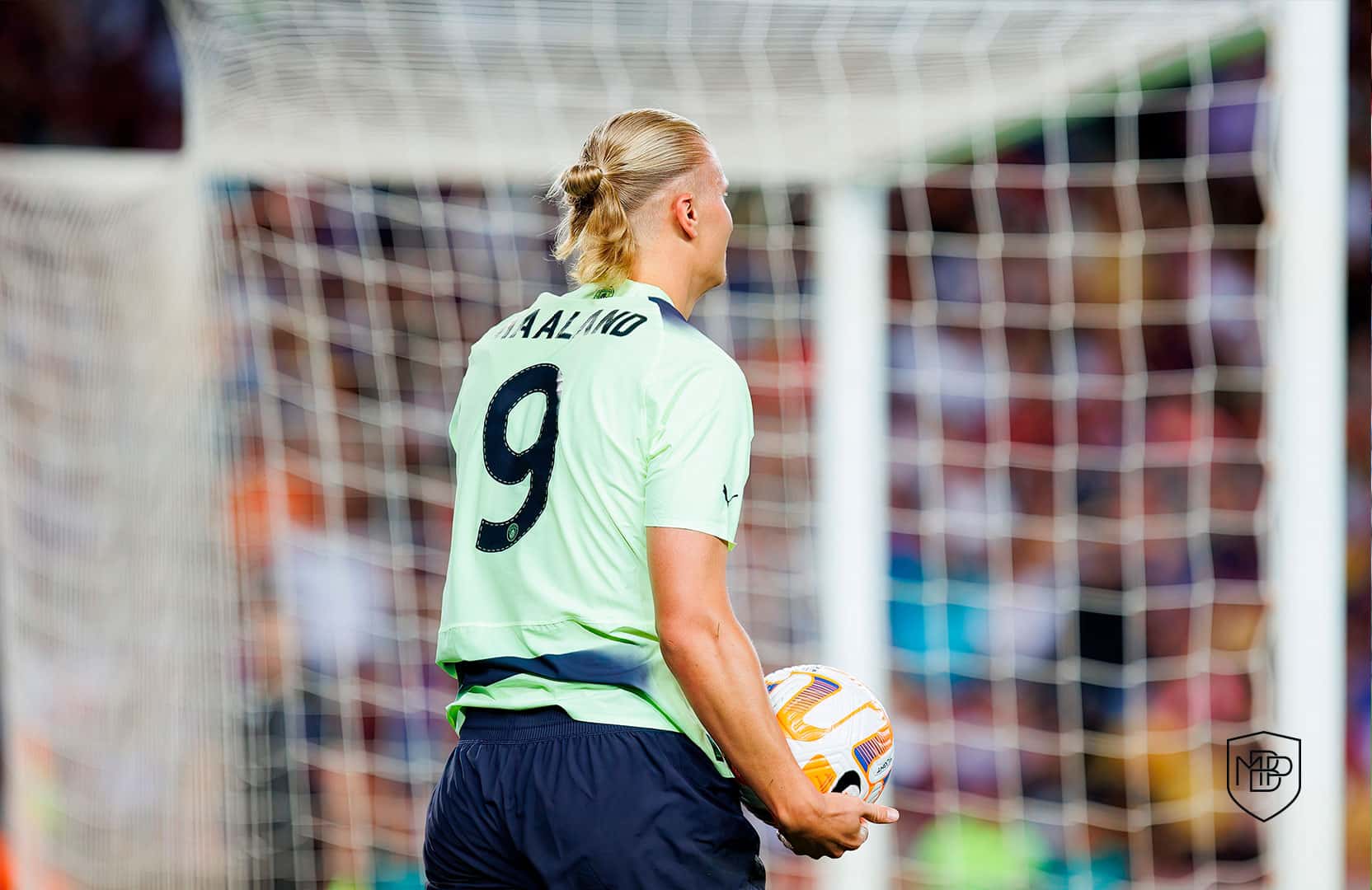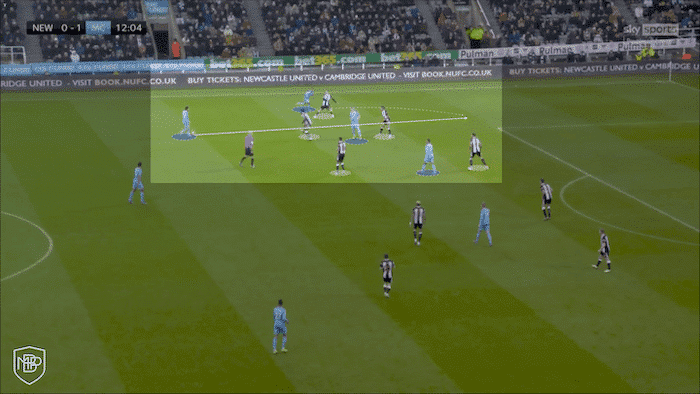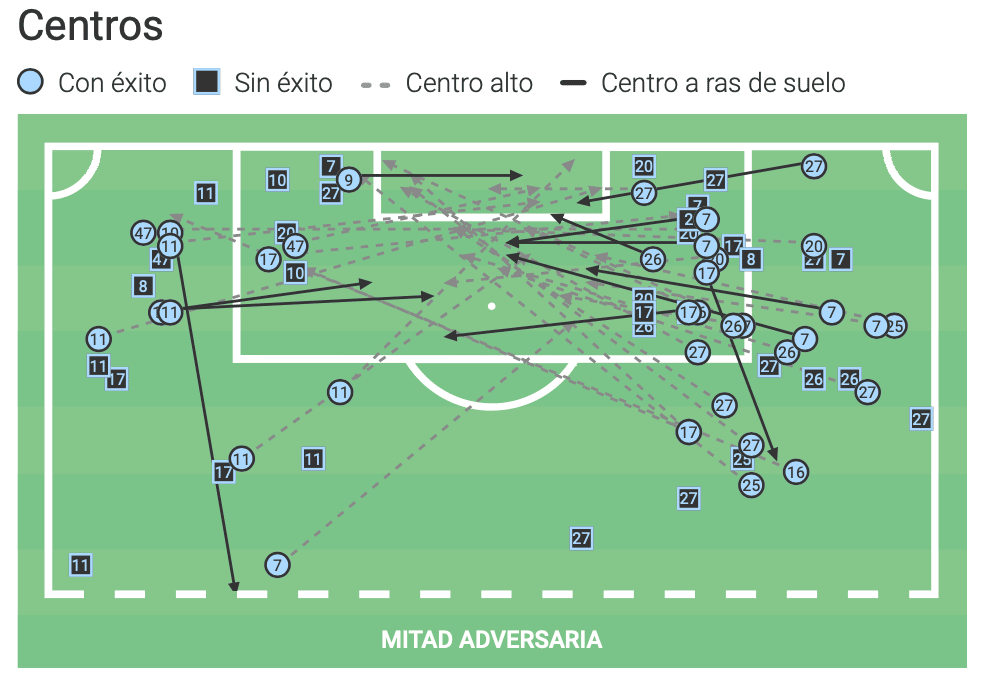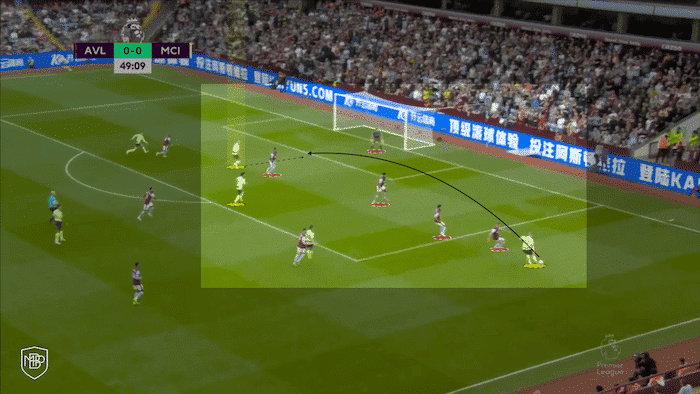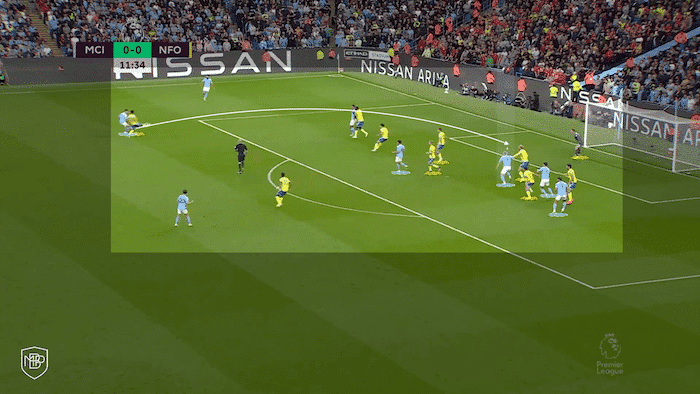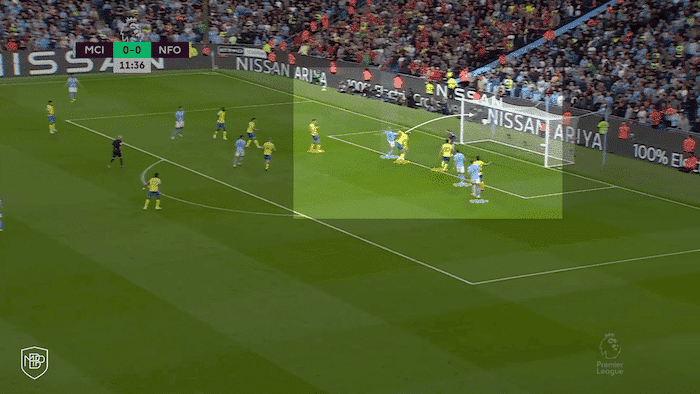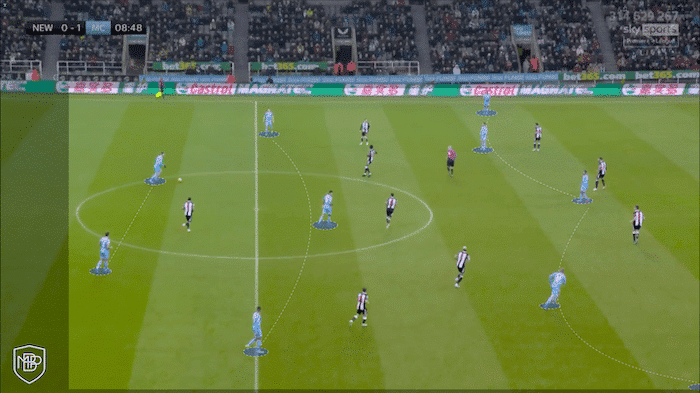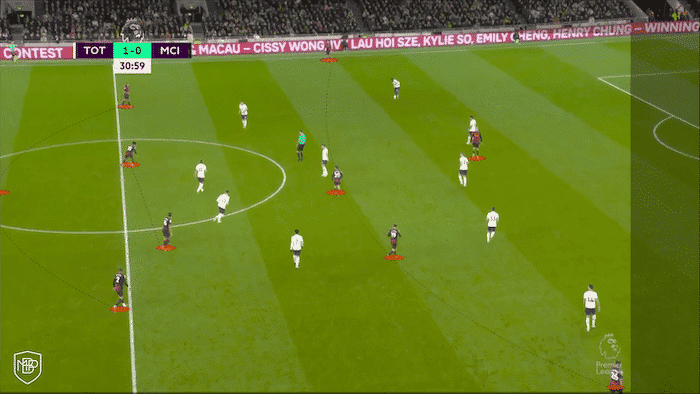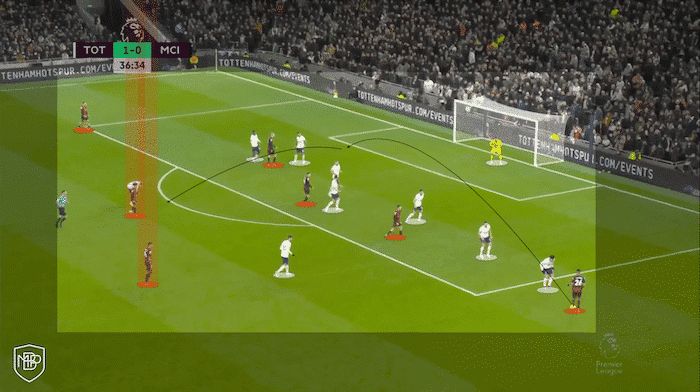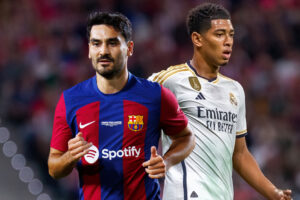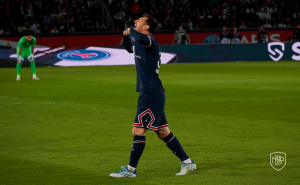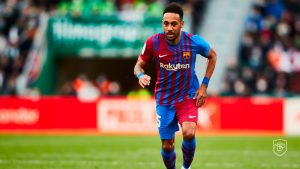This summer, Manchester City invested in the signing of Erling Haaland in order to improve the quality of their squad. With the arrival of the Norwegian, the English side signed one of the most coveted players on the market, and above all, a determined striker lethal in front of goal.
The inclusion of the striker in Guardiola’s attacking line-up has led to a series of tactical changes compared to previous seasons.
Therefore, at the MBP School of Coaches, we are going to analyse how the incorporation of the striker has affected City, both on a behavioural and structural level.
Tactical Analysis
Variation of behaviours in finishing
The first major difference compared to last season concerns how to attack opposing teams.
During the previous campaign, City based their attacking behaviour in the final 3rd on the principle of play ‘mobilising the ball to play in behind and play to the free man’.
The Etihad side sought to build up numerical superiority in the intervention zone (wide channels), with the aim of attracting a large number of opponents, in order to then play with the players located in the cooperation zone (far zone).
Likewise, players such as Kevin de Bruyne and Bernardo Silva were essential. Both were in charge of fluctuating between the different lines of the team and applying the game fundamentals such as ‘directing the play towards the favourable spaces for progression’, thus allowing them to implement the chosen principle.
Once they were close to the box, Pep’s team had a dominant principle of play, and a secondary one, depending on the opponent.
When faced with teams who positioned their defensive block 5-10 metres outside their own area, the champions looked to play through balls into the area while attacking the intraline intervals with runs from midfield.
On the other hand, in scenarios where the opponents were positioned in a very low defensive block and with a large number of defenders back, Pep’s team used the secondary game principle. This was based on attacking the area through wide crosses from the zones C or D.
However, with the arrival of Haaland, City have had to change the way they attack the opposition in the final third of the pitch, especially when finishing, and with the aim of enhancing the striker’s role.
Unlike last season, where the dominant principle of play was to play through balls inside the box to the ‘squares’ looking for 2nd line incorporations, this year the team are prioritising wide crosses as the main attacking route. In addition, the crossing zone has also changed, with a significant increase in crosses from the A and B zones.
Likewise, last season, it was common to see the Citizens play without a striker of reference. Now Pep’s side have a constant threat inside the box, which has allowed them to improve their use of space in all those finishing moves.
This aspect is reflected in wide crosses (a dominant principle this season). In addition to being a superb finisher, either with his feet or through his excellent aerial play, the 22-year-old has a perfect command of various individual fundamentals that allow him to always be in the right position, and to be lethal in this type of situation.
One of the most important of these is his ability to ‘attack the most effective spaces for finishing’. Thanks to this, Haaland always manages to be in the right place, thus, having enough time and space to finish.
The Dynamic Organisation in the Opposition Half
The second major change brought about by Haaland’s inclusion in City’s set-up has been the structure the team adopts in the opposition half.
Last season, the title winners played in a GK-2-3-5 formation with a high rotation of positions between their forwards (provoked by the principle of play).
However, during the current season, the Sky Blues have changed their dynamic organisation to GK-3-2-4-1. The fact that they have a striker in Haaland, who is more static than other players such as Gabriel Jesus, Phil Foden and even İlkay Gündoğan, has meant that Guardiola has had to modify his team’s dynamic organisation in this part of the pitch.
This aspect affected the number of players available in the intervals. While last year there were up to 5 mobile players responsible for attacking the pockets, this year it has been reduced to 2, as there are always two at maximum width, plus the figure of the striker guaranteeing the depth of the team.
In addition, another reason for the structural modification is the way they are attacking this year (explained in the previous point).
By playing more vertically through wide crosses, Guardiola’s side are experiencing more 2nd ball situations. For this reason, the Spanish coach has sought to strengthen the balance structure behind the ball with three centre backs and two holding midfielders, with the aim of preventing possible counterattacks by the opposition.
Conclusion
Haaland’s arrival has brought a host of positive qualities to City that were not available last season. However, his inclusion has also brought about a series of behavioural and structural changes. These are not yet delivering the expected performance on a collective level.
We will see if Guardiola manages to fit all the pieces of the puzzle together, in order to obtain the desired performance and results this season.

